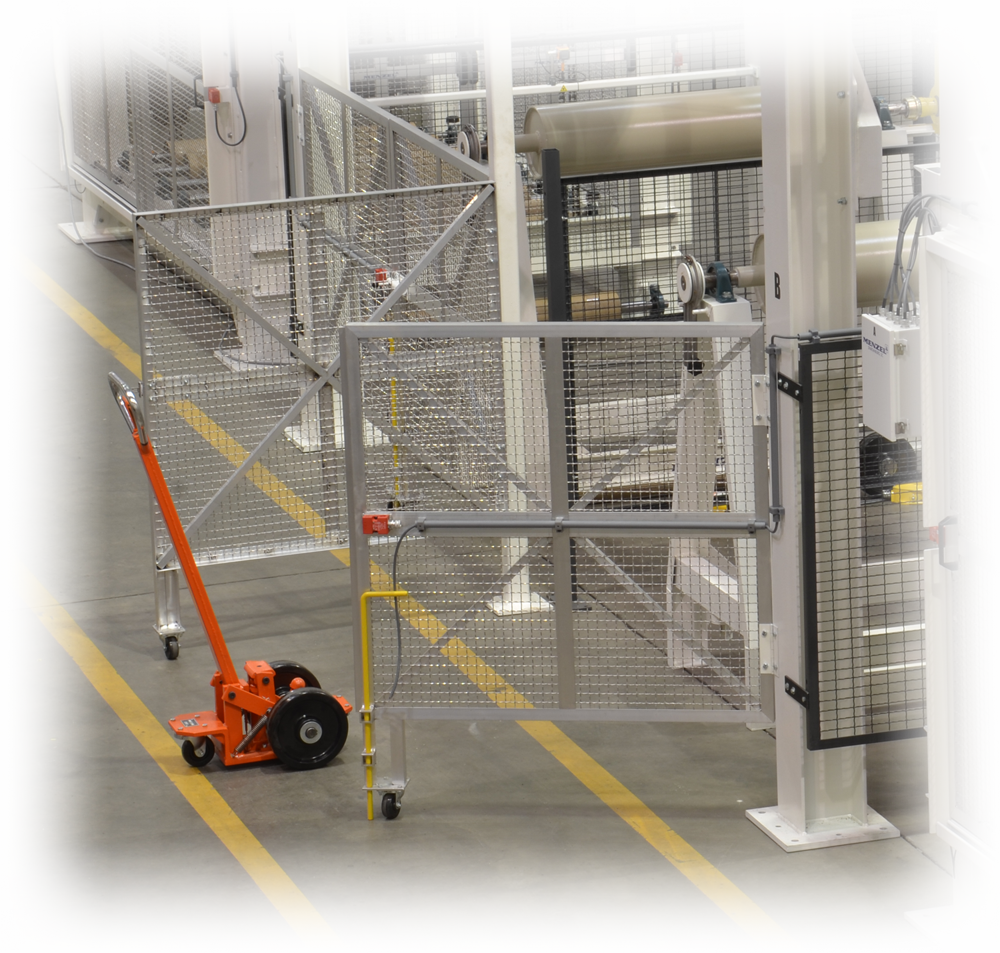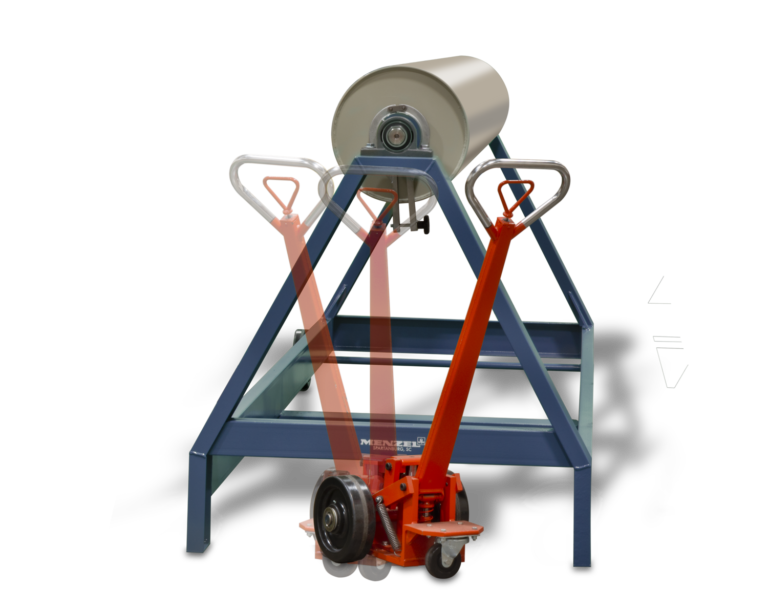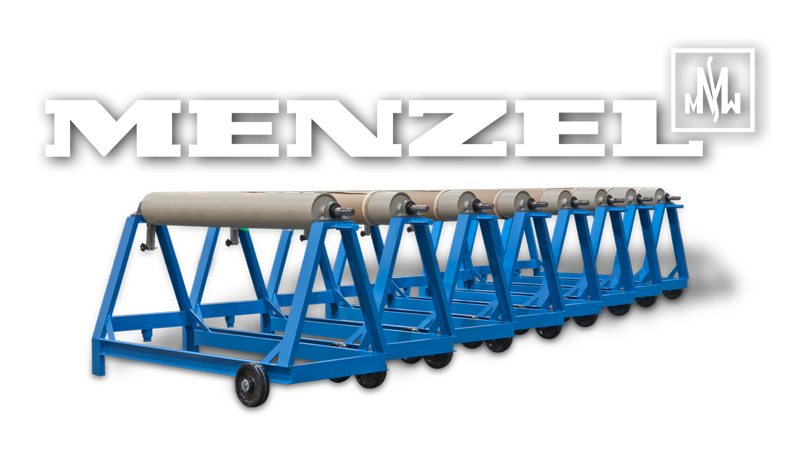
The Menzel A-Frame…
Often imitated, never duplicated
It was 1965 when Menzel introduced the first large roll batching system to the United States textile industry. This material handling system allows manufacturers to wind very large rolls of fabric onto fixed cores on portable carriages, resulting in several time and cost saving benefits.
For instance, longer continuous runs are achieved, which lead to less cutting and sewing, in turn lowering fabric waste and production costs. With fewer transports necessary, due to larger roll capacities up to 10,000 yards, manpower is significantly reduced. And because the fabric remains untouched during the manufacturing and transportation process, the risk of damage is lowered while quality is enhanced.
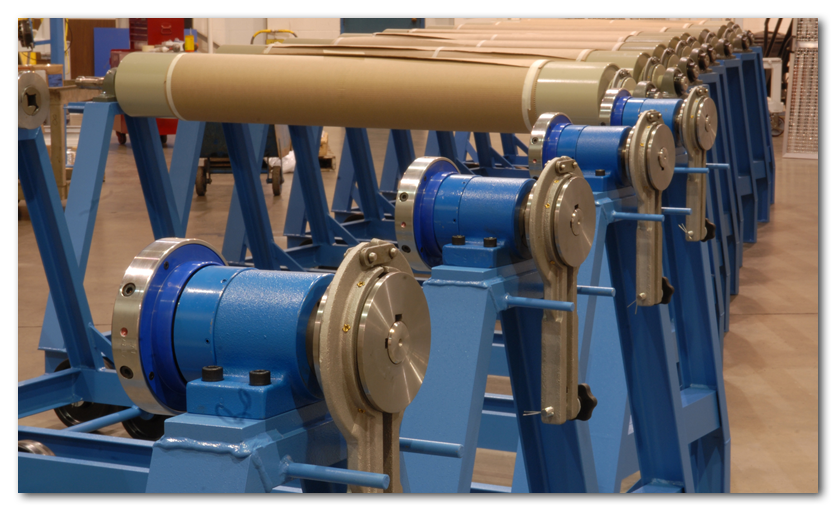
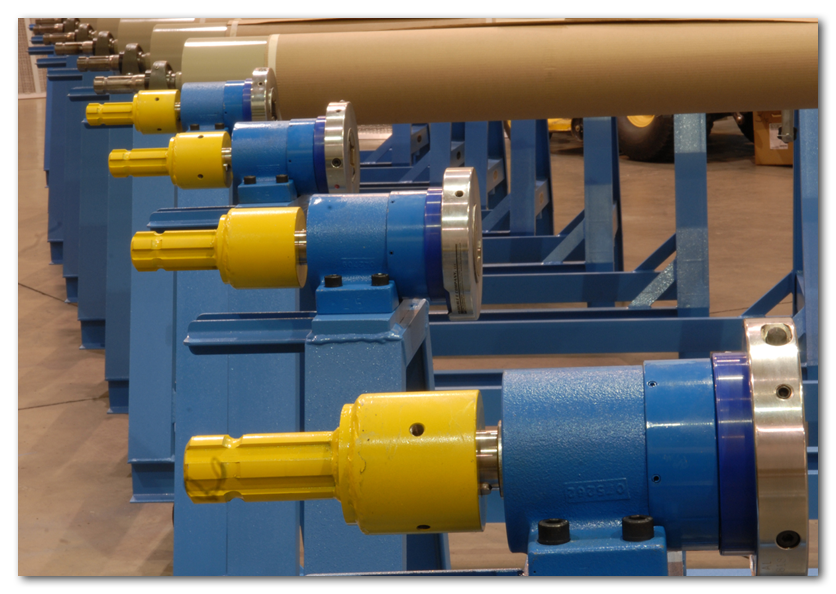
Not simply an apparatus for winding and unwinding
The A-Frame is another example of the impact of German technology on U.S. industry. Its success and acceptance has become synonymous with Menzel. But the A-Frame is not simply an apparatus for winding and unwinding fabric. It is a complete, mobile material handing, transportation and storage system. From the basic A-Frame, custom-made in a variety of sizes, to the transport dollys and portable carriages, this system offers versatility, as well as expandability.
The carriages handle rolls up to 40″ in diameter, which can be stacked four high for convenient storage.
The A-Frame system has helped textile industry manufacturers reduce material defects while improving the efficiency of their entire operation. Quite simply, Menzel has set the standard by which other portable material handling systems are measured.
The A-Frame has also spawned the development of a complete line of equipment for web unwinding, accumulating, guiding, slitting, and winding.
In addition, it has triggered a diverse line of entrance and exit machinery for all types of finishing, dyeing, and print ranges, as well as batching and final inspection stations. And due to its ease and efficiency, the Menzel product line has been adapted by the great majority of textile industry manufacturers since its introduction in the mid-sixties.
Copyright © 2025 Menzel Machinery USA | Powered by Specia WordPress Theme


